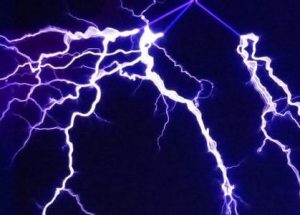In continuation of our “Are hospitals clean?” series, this post explores new cleaning technologies that are helping hospitals stay cleaner, longer. These methods will help reduce the number of patients with healthcare associated infections (HAIs). The number of HAIs has significantly reduced over the years. We can win this infectious battle against bacteria and viruses with new cleaning technology.
Electrolyzed Water
 One new disinfectant is showing promising results, and involves passing an electric current through a water and salt solution. That sounds so simple! In one study, the electrified water reduced bacteria on surfaces more than ammonium disinfectants. Another study showed that the solution notably decreased aerobic bacteria and MSRA when sprayed on hospital surfaces. Staff using this solution only have to spray it onto the surface – no wiping required! This is an easy and cheap way to keep surfaces clean and patients safe.
One new disinfectant is showing promising results, and involves passing an electric current through a water and salt solution. That sounds so simple! In one study, the electrified water reduced bacteria on surfaces more than ammonium disinfectants. Another study showed that the solution notably decreased aerobic bacteria and MSRA when sprayed on hospital surfaces. Staff using this solution only have to spray it onto the surface – no wiping required! This is an easy and cheap way to keep surfaces clean and patients safe.
Cold Air Plasma
Wow, cold air plasma sounds cool, but what is it? Plasma is created when an electric field is applied to electrodes, plasma forms. When the plasma encounters the oxygen molecules, they become reactive. These reactive oxygen molecules destroy bacteria and viruses on contact. This means that cold air plasma systems create bacteria and virus free air. It has shown to dramatically reduce the amount of Staphylococcus Aureaus, which is bacteria that can cause severe skin rashes and is highly contagious. Salmonella, E-coli, and Candida Albicans, as well as other dangerous bacteria strains, are also destroyed by this process. Imagine all hospitals having these systems. The reduction of HAIs would be massive and impactful.
Liquid Disinfectants
There are other new liquid disinfectant solutions that are making waves in hospitals. Hydrogen peroxide cleaners are improving to reduce bacteria levels. In fact, one study shows that these solutions actually reduced the number of HAIs compared to an existing product that was used often. The new hydrogen peroxide solutions also fight norovirus surrogate viruses.
Another new liquid disinfectant is made from peracetic acid and hydrogen peroxide. This cleaner also shows promising results when it comes to reducing bacteria on surfaces. It even works better than a common ammonium cleaner widely used.
Hospitals, Get the New Tech!
A combination of some or all of these new cleaning technologies will certainly bring down the number of patients with HAIs in medical facilities. The cost of it all is the main concern. Many hospitals use a professional cleaning service to disinfect their facilities. However, the more experienced a company is at cleaning hospitals, the more it costs. Cleaning can cost $25-$75 an hour for labor, maybe even more! This estimate is not even including the cleaning supplies, which add more to the overall cost. Hospitals should adopt more efficient cleaning practices. It is a high cost at first, but over time it will be worth it.


